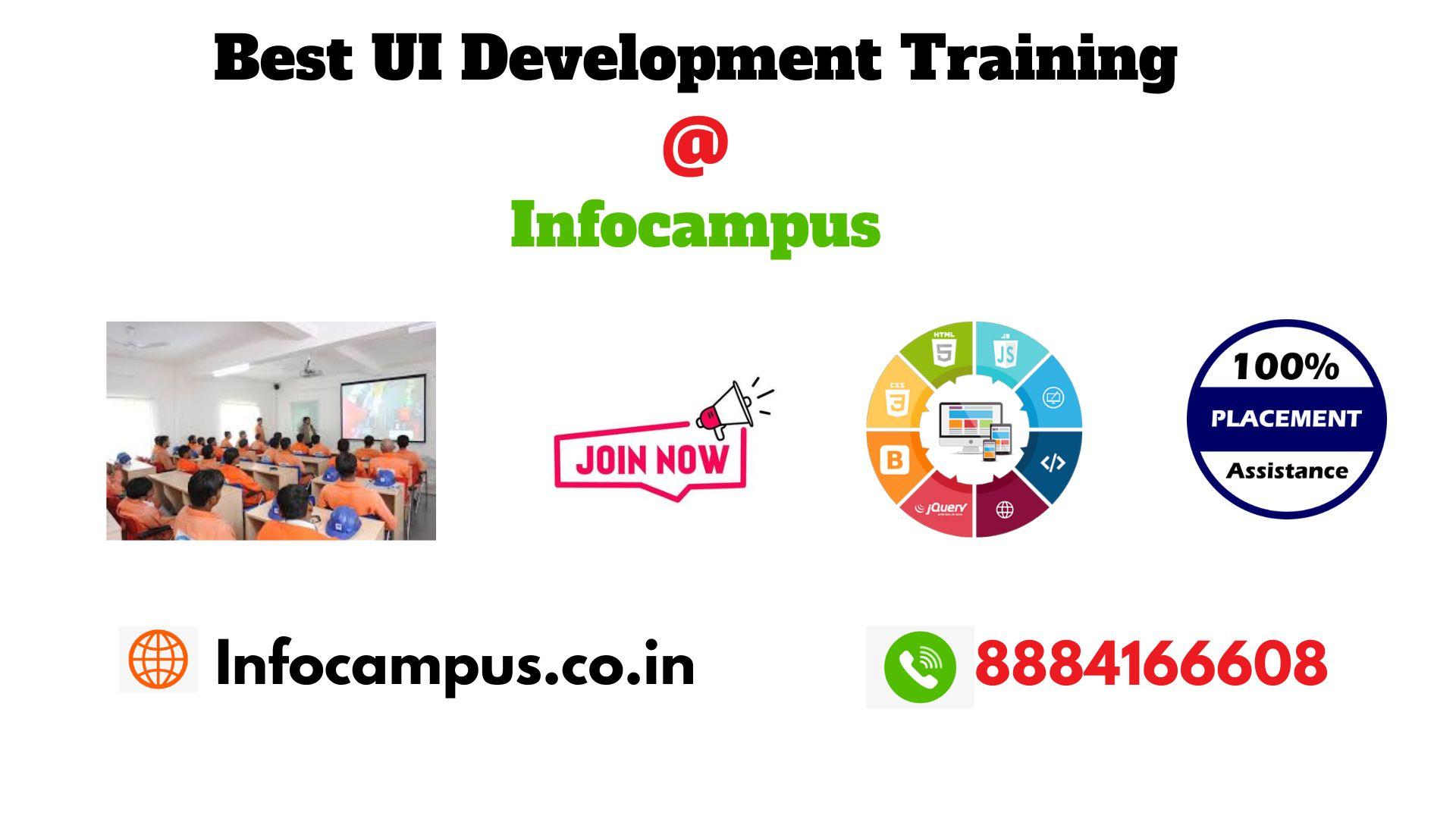UI Development Course: A Comprehensive Guide

User Interface (UI) development is a critical aspect of software and web development, focusing on creating the visual and interactive elements of applications. It encompasses everything that users interact with when they use a digital product, from buttons and icons to overall layout and design. User experience (UX) can be greatly improved by a well-designed user interface (UI), which makes applications more efficient, fun, and intuitive to use.
A UI development course aims to equip learners with the skills and knowledge required to design and develop effective user interfaces. This comprehensive guide explores the essential components of a UI development course, detailing the curriculum, tools, techniques, and career prospects.
Chapter 1: Introduction to UI Development
1.1 What is UI Development?
UI Development involves creating the visual aspects of software applications that users interact with. It includes designing layouts, buttons, images, text, and other visual elements to create an intuitive and aesthetically pleasing experience.
1.2 Importance of UI Development
A well-designed UI can:
- Improve user satisfaction
- Enhance usability
- Increase user engagement
- Reduce the learning curve for new users
- Assist in making an application successful overall
Chapter 2: Fundamental Concepts in UI Design
2.1 Principles of UI Design
- Consistency: Ensure uniformity in design elements.
- Feedback: Provide users with responses to their actions.
· Efficiency: Make things fast and simple to utilize.
- Clarity: Make the interface simple and easy to understand.
2.2 User-Centered Design
Focusing on user needs and behaviors to create effective interfaces. Techniques include:
- User research
- Personas
- User journey mapping
- Usability testing
Chapter 3: Tools and Technologies
3.1 Design Tools
- Sketch: Vector graphics editor for designing interfaces.
- Adobe XD: Tool for designing and prototyping user experiences.
- Figma: Collaborative interface design tool.
3.2 Development Tools
- HTML/CSS: Web development with markup and styling languages.
- JavaScript: Programming language for creating interactive elements.
- Frameworks: React, Angular, and Vue.js for building dynamic web applications.
Chapter 4: HTML and CSS
4.1 Basics of HTML
- Understanding HTML structure
- Semantic HTML
- Forms and input elements
4.2 Advanced HTML
- HTML5 features
- APIs for multimedia and graphics
4.3 Basics of CSS
- Selectors and properties
- Box model
- Flexbox and Grid
4.4 Advanced CSS
- CSS preprocessors (Sass, LESS)
- Animations and transitions
- Responsive design
Chapter 5: JavaScript for UI Development
5.1 Basics of JavaScript
- Variables and data types
- Functions and scope
- DOM manipulation
5.2 Advanced JavaScript
- ES6+ features
- Asynchronous programming (Promises, Async/Await)
- JavaScript frameworks (React, Angular, Vue.js)
Chapter 6: UI Frameworks and Libraries
6.1 React
- Components and props
- State and lifecycle
- Hooks and context API
6.2 Angular
- Components and modules
- Services and dependency injection
- Angular CLI and routing
6.3 Vue.js
- Vue instance and data binding
- Directives and components
- Vue Router and Vuex
Chapter 7: Responsive and Adaptive Design
7.1 Principles of Responsive Design
- Fluid grids
- Flexible images
- Media queries
7.2 Implementing Responsive Design
- Mobile-first approach
- Bootstrap and Foundation frameworks
7.3 Adaptive Design Techniques
- Using different layouts for different devices
- Progressive enhancement
Chapter 8: UX Principles in UI Development
8.1 Understanding User Experience (UX)
- UX vs. UI
- User research and personas
- User journey and experience mapping
8.2 Usability Testing
- Techniques and methods
- Conducting usability tests
- Analyzing results and improving design
Chapter 9: Advanced Topics in UI Development
9.1 Performance Optimization
- Reducing load times
- Optimizing images and assets
- Code splitting and lazy loading
9.2 Accessibility
- Importance of accessibility
- ARIA roles and attributes
- Tools for testing accessibility
9.3 Internationalization and Localization
- Adapting UIs for different languages and regions
- Best practices for localization
Chapter 10: Building and Deploying UI Projects
10.1 Project Structure and Organization
- Setting up a project
- Using version control (Git)
10.2 Build Tools and Task Runners
- Webpack, Gulp, and Grunt
- Automating tasks and optimizing builds
10.3 Deployment
- Hosting options (Netlify, Vercel, AWS)
- Continuous integration and delivery (CI/CD)
Chapter 11: Real-World Projects and Case Studies
11.1 Project Examples
- E-commerce websites
- Social media applications
- Dashboard and analytics tools
11.2 Case Studies
- Analysis of successful UI projects
- Lessons learned and best practices
Chapter 12: Career Prospects in UI Development
12.1 Job Roles and Opportunities
- UI Developer
- Front-end Developer
- UX/UI Designer
12.2 Skills and Qualifications
- Required technical skills
- Soft skills and portfolio building
12.3 Industry Trends and Future Prospects
- Emerging technologies
- Continuous learning and professional development
Conclusion
UI development is a dynamic and rewarding field, combining creativity with technical skills to create engaging and user-friendly applications. A comprehensive UI development course can provide the foundational knowledge and practical experience needed to excel in this field, opening up numerous career opportunities and the potential for innovation in the digital world. Whether you're a beginner looking to start a career in UI development or an experienced developer aiming to enhance your skills, understanding the core concepts, tools, and techniques is essential for success.
Learn the art of UI development with Infocampus comprehensive training. Master the latest tools and techniques to create visually stunning, user-friendly interfaces. Elevate your career with industry-leading expertise. Enroll now and transform your design skills. For more details Call: 8884166608 or 9740557058
Visit: https://infocampus.co.in/ui-development-training-in-bangalore.html
- Art
- Causes
- Crafts
- Dance
- Drinks
- Film
- Fitness
- Food
- Games
- Gardening
- Health
- Home
- Literature
- Music
- Networking
- Other
- Party
- Religion
- Shopping
- Sports
- Theater
- Wellness
- IT, Cloud, Software and Technology


